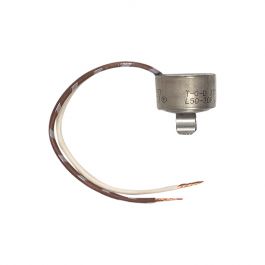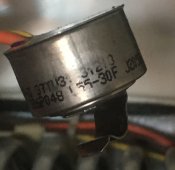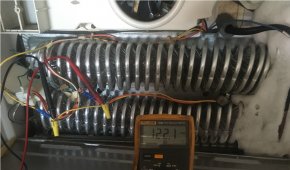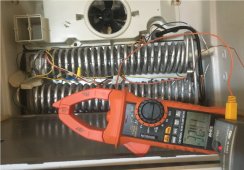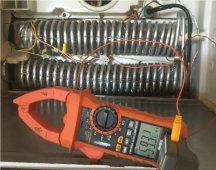Paul_B
New Member
Hello,
I am new to the forum. I have deep respect for the generous folks I see posting their experience and assistance. Thank you.
We live on the grid, in a rural area just west of Algonquin Park, in Ontario, Canada. For a long time, I have been keen to reduce our dependency on grid power. This includes our energy usage for refrigeration. Medium term plans are to add PV and batteries to safeguard DC freezers and fridges.
I’d like to share some energy usage numbers for chest fridges / freezers. In the past, I experimented with the “home-brew” external thermostat conversion approach on several freezer units; Over time, I purchased several Sundanzer units. I have collected Kill-a-Watt usage figures each month over the past 4 to 6 years for these units.
RF_DCRF is in the kitchen where ambient temps stay between 16 deg to 24. Other units were/are in an attached garage (modestly insulated, but no direct heating). Summer inside ambient temps can reach 25 deg. Celcius. Winter inside ambient temps get down to -1 on very cold days (-30). Obviously, ambient temp plays a major role in energy consumption of a fridge or freezer.
Takeaways / Comments
- The usage figures for the DC units include power supply consumption (approx 6W), so those WHr/Day values are conservative.
- “Personality” of DC appliances is different than AC. AC freezers can cool quickly. DC freezers cool a bit slower, compressor runs longer each day, but lower overall power consumption.
- Chest Fridges have no drains, or defrosters. Condensation needs to be mopped up regularly.
- With a chest fridge, stackable baskets are very useful. With no shelves for horizontal access, you use the refrigerated space differently than an upright unit. It’s do-able, not always convenient.
- Thicker Insulation on Sundanzer units than brand-name AC units; I suspect a unique blend of insulating foam.
- Usage figures in marketing material can look great, but probably don’t reflect opening/closing multiple time in a day during normal use. YMMV – mine certainly does.

Best regards,
Paul
I am new to the forum. I have deep respect for the generous folks I see posting their experience and assistance. Thank you.
We live on the grid, in a rural area just west of Algonquin Park, in Ontario, Canada. For a long time, I have been keen to reduce our dependency on grid power. This includes our energy usage for refrigeration. Medium term plans are to add PV and batteries to safeguard DC freezers and fridges.
I’d like to share some energy usage numbers for chest fridges / freezers. In the past, I experimented with the “home-brew” external thermostat conversion approach on several freezer units; Over time, I purchased several Sundanzer units. I have collected Kill-a-Watt usage figures each month over the past 4 to 6 years for these units.
RF_DCRF is in the kitchen where ambient temps stay between 16 deg to 24. Other units were/are in an attached garage (modestly insulated, but no direct heating). Summer inside ambient temps can reach 25 deg. Celcius. Winter inside ambient temps get down to -1 on very cold days (-30). Obviously, ambient temp plays a major role in energy consumption of a fridge or freezer.
| F_CF | Amana/Maytag | AC Chest Freezer | 14.8 cu ft |
| F_DCF | Sundanzer DCF 390 | DC Chest Freezer - 12VDC power supply | 14.7 cu ft |
| F_SCF | Danby Compact | AC Chest Freezer | 3.6 cu ft for fallback use |
| R_SCF (converted) | Danby Compact | AC Chest Freezer | 3.6 cu ft for fallback use |
| R_UF (converted) | Large upright | AC Upright Fridge | Approx. 18Cu ft No longer used - RIP |
| R_DCR | Sundanzer DCR 225 | DC Chest Fridge AC power option, DC compressor | 7.9 cu ft |
| RF_DCRF | Sundanzer DCRF 450 | DC Upright Fridge/Freezer - 12VDC power supply | 15 cu ft |
Takeaways / Comments
- The usage figures for the DC units include power supply consumption (approx 6W), so those WHr/Day values are conservative.
- “Personality” of DC appliances is different than AC. AC freezers can cool quickly. DC freezers cool a bit slower, compressor runs longer each day, but lower overall power consumption.
- Chest Fridges have no drains, or defrosters. Condensation needs to be mopped up regularly.
- With a chest fridge, stackable baskets are very useful. With no shelves for horizontal access, you use the refrigerated space differently than an upright unit. It’s do-able, not always convenient.
- Thicker Insulation on Sundanzer units than brand-name AC units; I suspect a unique blend of insulating foam.
- Usage figures in marketing material can look great, but probably don’t reflect opening/closing multiple time in a day during normal use. YMMV – mine certainly does.

Best regards,
Paul
Last edited:




